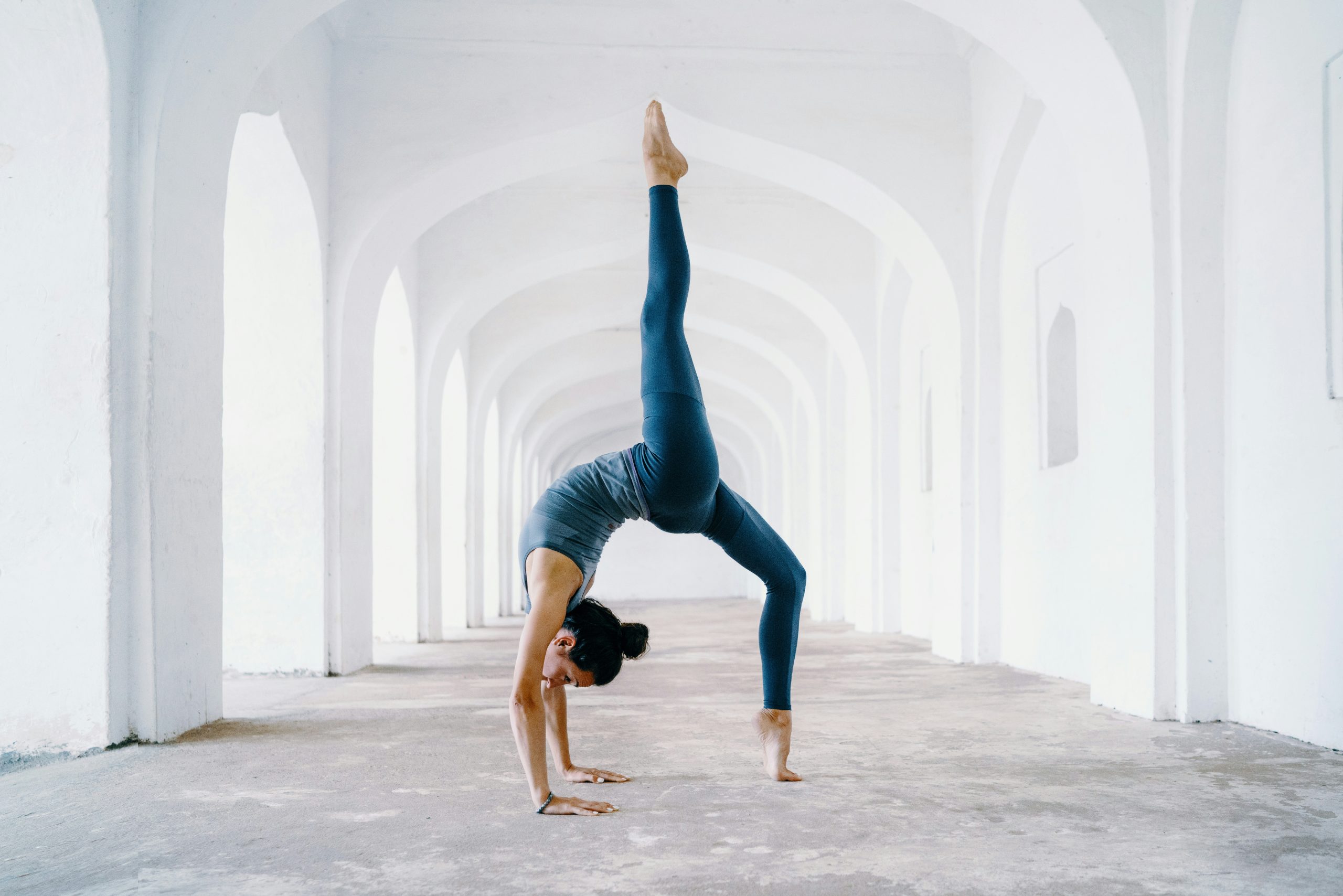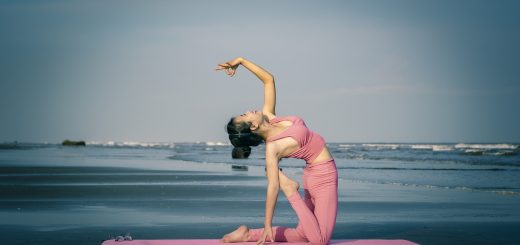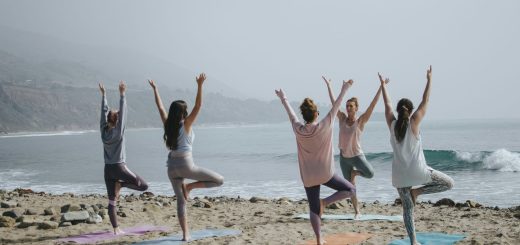Eagle Pose Yoga: Soaring to Spiritual and Physical Balance

Before diving in, please note: This post is for informational purposes only. If you’d like to know more about how we approach topics, feel free to check out our friendly Disclaimer Page.
Hey there, amazing readers! 🖐️ Just a quick note: yes, we know there are a lot of ads here. Trust us, we get it—it’s not the prettiest look, but they help us keep this blog alive and kicking. Those pesky little ads cover the costs of all the behind-the-scenes magic, from hosting and tech stuff to creating content we hope you’ll love.
We’re committed to delivering quality posts, and your support (even just sticking around despite the ads) means everything to us. So, bear with us, and thanks for helping us keep the good vibes rolling. Now, on to the fun stuff! 😉
TRANSLATE BUTTON AT THE END OF THE ARTICLE
Overview: Understanding the Essence of Eagle Pose
Eagle Pose, also known as Garudasana in Sanskrit, is a popular yoga asana that offers a multitude of physical, mental, and spiritual benefits.
It is an intermediate level pose that requires balance, flexibility, and concentration.
In this pose, the arms and legs are intricately intertwined, mimicking the powerful and majestic stance of an eagle in flight.
The Eagle Pose symbolizes strength, grace, and focus, making it a highly regarded posture in the world of yoga.
By practicing this pose, individuals can experience a deep sense of grounding, release tension in the body, and achieve a state of inner calm.
It is a perfect embodiment of the harmonious balance between the physical and spiritual aspects of yoga.
Origins: Tracing the Roots of Eagle Pose Yoga
Eagle Pose has its origins deeply rooted in ancient Indian culture and the practice of yoga.
It is believed to have been developed thousands of years ago as part of the Hatha Yoga tradition.
The pose is often associated with the Hindu deity Garuda, who is depicted as an eagle or a bird-like creature.
Garuda is considered a symbol of power, strength, and freedom, and incorporating the pose into yoga practice helps individuals channel these qualities.
Over time, the pose has evolved and gained popularity in various yoga lineages, becoming a staple in many yoga classes and sequences around the world.
Physical Benefits: Strengthening and Balancing the Body
Eagle Pose offers numerous physical benefits that contribute to the overall health and well-being of individuals.
Some of these benefits include:
Improved balance: The intricate leg and arm positioning in Eagle Pose challenges balance and stability, helping to strengthen the muscles in the legs and improve overall coordination.
Increased flexibility: This pose stretches and opens the shoulders, upper back, hips, and legs, promoting flexibility and range of motion in the joints.
Toned muscles: Holding the pose engages and tones the muscles of the thighs, calves, and glutes, leading to increased strength and stability in the lower body.
Improved circulation: The compression and release of different parts of the body in Eagle Pose enhances blood circulation, delivering fresh oxygen and nutrients to the organs and muscles.
Enhanced focus: Maintaining the pose requires concentration, which helps improve mental focus and mindfulness during practice.
Mental Benefits: Cultivating Focus and Inner Calm
In addition to the physical benefits, Eagle Pose also offers various mental benefits.
Regular practice of this pose can help individuals cultivate focus, concentration, and inner calm.
Here are a few mental benefits of practicing Eagle Pose:
Improved concentration: The complex nature of the pose and the need for precise alignment require practitioners to focus their attention on the present moment, improving concentration and mental clarity.
Reduced stress and anxiety: The deep stretching and mindful breathing in Eagle Pose help release tension stored in the body, promoting relaxation and reducing stress and anxiety.
Enhanced mind-body connection: The practice of Eagle Pose encourages individuals to connect with their breath, body, and mind, fostering a deeper sense of self-awareness and mindfulness.
Improved resilience: The challenging nature of the pose teaches individuals to persevere and develop a sense of resilience, both on and off the mat.
Spiritual Connection: Exploring the Deeper Layers of Yoga
Yoga is not just a physical exercise but also a spiritual practice that aims to unite the mind, body, and spirit.
Eagle Pose, with its powerful symbolism and intricate physical alignment, offers a gateway for individuals to explore the deeper layers of yoga and connect with their spiritual selves.
Symbolism: The pose is often associated with the eagle, a symbol of power, freedom, and spiritual connection.
By embodying the qualities of an eagle, individuals can tap into their inner strength and wisdom.
Energy flow: Eagle Pose helps stimulate the flow of energy, or prana, throughout the body, promoting balance and harmony within.
This can lead to a deeper connection with one’s spiritual essence.
Chakra activation: The posture activates the energy centers, or chakras, in the body, particularly the Manipura (solar plexus) and Anahata (heart) chakras.
This can help individuals cultivate self-confidence, compassion, and love.
Meditative state: The focus and concentration required in Eagle Pose can lead to a meditative state of mind, allowing individuals to explore their inner selves and deepen their spiritual practice.
Step-by-Step Guide: Mastering the Eagle Pose
To practice Eagle Pose, follow these step-by-step instructions:
Begin in a standing position with your feet hip-width apart and arms at your sides.
Shift your weight onto your left foot and slowly bend your right knee, lifting your right foot off the ground.
Cross your right thigh over your left thigh, hooking your right foot behind your left calf if possible.
Extend your arms in front of you at shoulder height.
Cross your left arm over your right arm, bringing the palms of your hands together.
Bend your elbows, bringing your forearms perpendicular to the floor.
Lift your elbows slightly, creating space between your shoulder blades.
Keep your gaze steady and find a focal point to help with balance.
Hold the pose for 5 to 10 breaths, then slowly release and repeat on the other side.
Modifications: Adapting the Pose for Different Abilities
It is important to note that not everyone may be able to achieve the full expression of Eagle Pose immediately.
Fortunately, there are modifications available to accommodate different abilities and levels of flexibility.
Here are a few modifications for Eagle Pose:
Modified leg position: If crossing the thighs is challenging, individuals can simply cross the ankles or rest the toes of the lifted leg on the ground for support.
Arm position: If it is difficult to bring the palms together, practitioners can use a strap or hold onto the opposite wrist instead.
Chair modification: For individuals with limited mobility or balance issues, the pose can be practiced while seated on a chair.
Simply cross one leg over the other and wrap the arms as described earlier.
Modifications should always be practiced with awareness and in consultation with a qualified yoga instructor to prevent any potential injury.
Precautions: Safety Measures for Practicing Eagle Pose
While Eagle Pose is generally safe for most individuals, there are a few precautions to keep in mind to prevent strain or injury.
Here are some safety measures to observe when practicing Eagle Pose:
Knee injury: Individuals with knee injuries or chronic knee pain should avoid or modify the pose to prevent further strain or discomfort.
Consult with a healthcare professional or a knowledgeable yoga teacher for alternative options.
Shoulder impingement: Those with shoulder injuries or impingement issues should be cautious when bringing the arms into the crossed position.
Modifying the arm placement or reducing the depth of the movement can help prevent aggravation.
High blood pressure: Individuals with high blood pressure should avoid raising their arms above shoulder level during the pose.
Keeping the arms lower can prevent a sudden increase in blood pressure.
Pregnancy: Pregnant individuals should practice caution and consult with their healthcare provider before attempting Eagle Pose.
Modifying the pose or avoiding it altogether may be necessary to ensure the safety of both the mother and the baby.
It is always recommended to practice under the guidance of a qualified yoga instructor, especially if you have any pre-existing medical conditions or concerns.
Variations: Exploring Different Expressions of the Pose
Eagle Pose offers a variety of variations to cater to different skill levels and preferences.
These variations can provide additional challenges or modifications to suit individual needs.
Here are a few variations of Eagle Pose:
Standing Eagle: The traditional expression of Eagle Pose begins in a standing position.
However, it can also be practiced in a seated position, where the legs are crossed and the arms are wrapped as described earlier.
Advanced Eagle: For those seeking a deeper challenge, the full expression of Eagle Pose can be taken to the next level.
Instead of hooking the foot behind the calf, practitioners can explore hooking the foot behind the opposite thigh, creating a deeper twist and stretch.
Flying Eagle: This variation adds an extra element of balance and strength by lifting one or both legs off the ground while maintaining the crossed leg position.
This variation requires advanced strength and stability.
Eagle Arm Bind: For individuals who are more flexible in the shoulders, an arm bind can be added to the pose.
Instead of crossing the arms in front of the body, individuals can reach one hand behind the back, and the other hand over the shoulder to clasp hands.
Complementary Asanas: Enhancing the Eagle Pose Sequence
Eagle Pose can be practiced as a standalone posture or as part of a sequence that incorporates complementary asanas.
These asanas can help enhance the benefits of Eagle Pose and create a well-rounded practice.
Here are a few asanas that pair well with Eagle Pose:
Tree Pose (Vrksasana): This balancing pose can be practiced before or after Eagle Pose to further develop balance and stability.
Warrior III (Virabhadrasana III): This standing balancing pose helps strengthen the legs and core, creating a solid foundation for Eagle Pose.
Cow Face Pose (Gomukhasana): This seated pose stretches the shoulders and hips, preparing the body for the arm and leg positions in Eagle Pose.
Child’s Pose (Balasana): This restorative pose can be practiced after Eagle Pose to release any tension and provide a moment of relaxation.
Conclusion: Embracing Balance and Harmony through Yoga
Eagle Pose, with its spiritual significance and physical benefits, serves as a powerful tool to cultivate balance and harmony within oneself.
By practicing this pose, individuals can strengthen their bodies, sharpen their minds, and deepen their connection to their spiritual selves.
Whether you are a seasoned yogi or a beginner, incorporating Eagle Pose into your yoga practice can provide a transformative and enriching experience.
So, spread your wings, embrace the strength and grace of an eagle, and soar to new heights of spiritual and physical balance with Eagle Pose.

The Enlightenment Journey is a remarkable collection of writings authored by a distinguished group of experts in the fields of spirituality, new age, and esoteric knowledge.
This anthology features a diverse assembly of well-experienced authors who bring their profound insights and credible perspectives to the forefront.
Each contributor possesses a wealth of knowledge and wisdom, making them authorities in their respective domains.
Together, they offer readers a transformative journey into the realms of spiritual growth, self-discovery, and esoteric enlightenment.
The Enlightenment Journey is a testament to the collective expertise of these luminaries, providing readers with a rich tapestry of ideas and information to illuminate their spiritual path.
Our Diverse Expertise 🌟
While our primary focus is on spirituality and esotericism, we are equally passionate about exploring a wide range of other topics and niches 🌍📚. Our experienced team is dedicated to delivering high-quality, informative content across various subjects ✨.
To ensure we provide the most accurate and valuable insights, we collaborate with trusted experts in their respective domains 🧑🏫👩🏫. This allows us to offer well-rounded perspectives and knowledge to our readers.
Our blog originally focused on spirituality and metaphysics, but we’ve since expanded to cover a wide range of niches. Don’t worry—we continue to publish a lot of articles on spirituality! Frequently visit our blog to explore our diverse content and stay tuned for more insightful reads.






